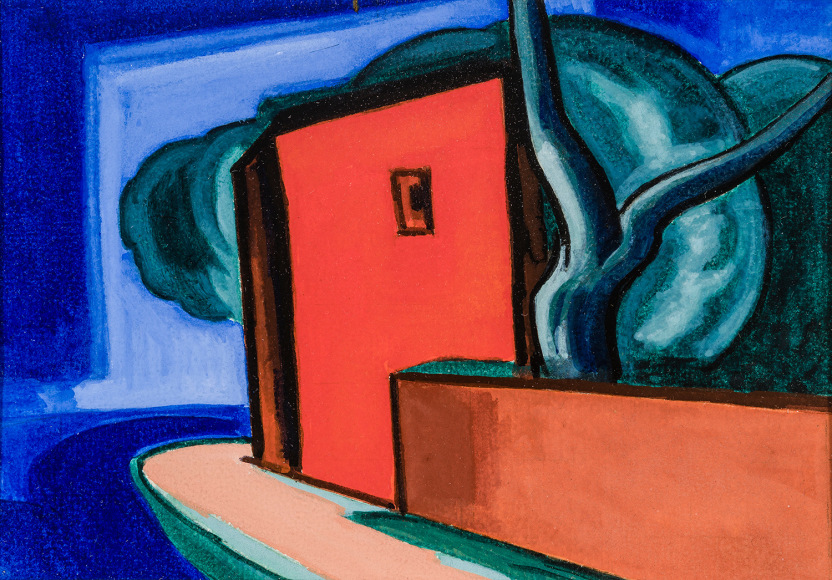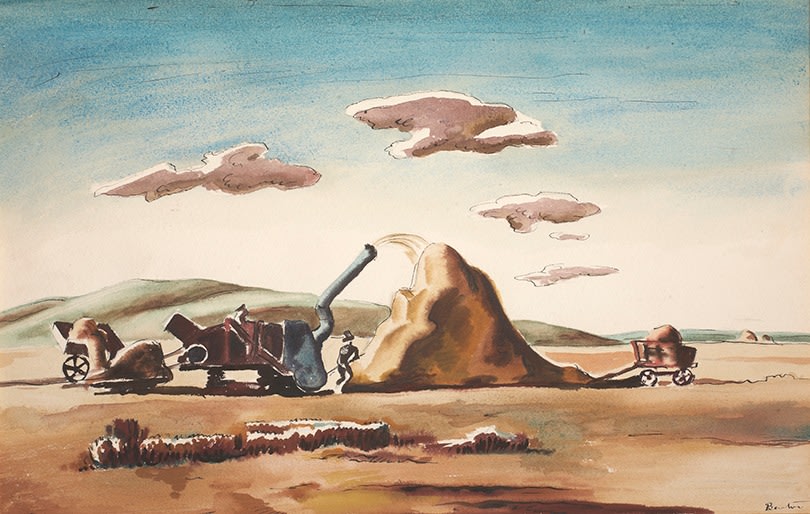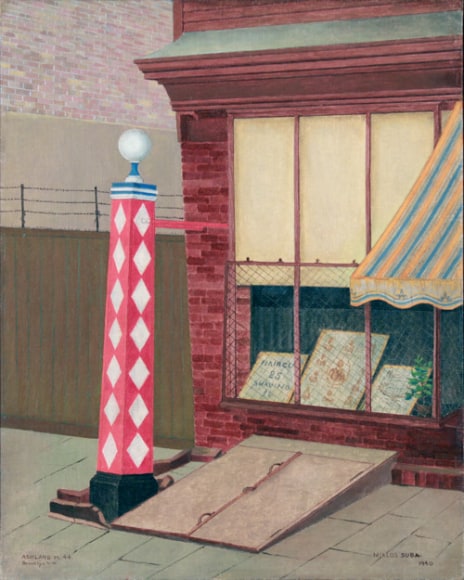Berggruen Gallery is pleased to present American Modernism, a group exhibition on view June 28 – August 4, 2018. American Modernism will present a significant body of work created by American artists between 1915 and 1960. The exhibition will feature paintings and works on paper by:
Milton Avery Charles Demuth Georgia O'Keeffe
Thomas Hart Benton Arthur Dove Jackson Pollock
Oscar Bluemner Marsden Hartley Charles Sheeler
Charles Burchfield Charles Howard Joseph Stella
Stuart Davis Blanche Lazzell Miklos Suba
As the turn of the century signaled a rapidly changing American identity characterized by unprecedented urban growth and subsequent shifts in the nation’s cultural fabric, artists sought to create a visual language embodying the transforming American landscape and experience. American Modernism presents a compelling selection of works created by pioneering artists who embraced and recounted the evolution and rise of modern America through an array of stylistic and aesthetic principles. In this exhibition, issues of modernity and the realities of urbanization coincide with celebrations of American progress and the triumph of the machine, while artists simultaneously express a nostalgia for an American landscape devoid of human intervention. Compelling representations of the urban sublime – stark geometry, industrial motifs, shifting planes – contrast with a romantic vision of the nation’s countryside rooted in the American spirit of freedom and an enduring reverence for America’s natural landscape. American Modernism reveals the vast spectrum of artistic expressions that occurred throughout this period, as the exhibition features rural landscapes, still-life compositions, industrial environments, domestic architecture, and scenes of human labor. As artists grappled with the expression of modern America following WWI and the search for a uniquely American identity, a range of artistic styles and thematic concerns signaled a profound shift in the nation’s visual culture and a legacy left by those who visualized and documented the country’s sociopolitical, cultural, and physical transformations in both rural and urban contexts.
Capturing the energy and vitality of America’s industrial progress, artists such as Charles Sheeler, Ralston Crawford, and Louis Lozowick focused their work on dynamic advances in technology and industrial construction by emphasizing the stark geometry, hard-edged forms, and manufactured precision that characterized the nation’s evolving cities and local industrial centers. Architectural breakthroughs inspired a profusion of fresh motifs – skyscrapers, smokestacks, bridges, factories – that contributed to the conception of the uniquely American Precisionist style. The Precisionists visualized the Machine Age by borrowing from the European avant-garde with styles such as Cubism, Purism, and Futurism, while these artists simultaneously experimented with a strikingly refined approach to composition, color, and form. Crawford’s Composition (Study for ‘Nacelles under Construction) (1946) and Sheeler’s Red Against White (1957) reveal sharply delineated areas of color and precisely rendered geometric forms that appear to mimic the stark manufactured surfaces of the industrial landscape. Emphasis shifts away from the representation of the human figure to instead accentuate the identity of America’s built environment – an environment where human labor is expelled by the inevitable force of the machine. Streamlined mechanical processes and the exactitude of modern machinery become a dynamic vehicle for artistic expression, inspiring an aesthetic consideration of industrial forms and their relationship to the outside world. Meanwhile, artists such as Stuart Davis explore the rise of consumer culture and contemporary society’s shifting values through bold graphic works incorporating tenets of commercial design and iconography. Davis’s sociopolitical commentary incorporates avant-garde styles such as Fauvism and Cubism yet remains chiefly dedicated to expressing the American experience, from jazz and popular culture to commercial advertising and life in New York City.
In addition to their focus on the nation’s urban centers, American Modernists found inspiration throughout rural and small-town America. The nation’s transforming agricultural industry and the growing prevalence of commercialization across rural America contributed to the conception of the Regionalist movement. Regionalist artists such as Thomas Hart Benton did not take the city as their subjects nor embraced pure abstraction, for they instead diverted from avant-garde styles to create works rooted in the raw, anecdotal expression of rural America. In Threshing Rice (1926), Benton presents a vision of working class America that reveals the increasing integration of industrialization and rural life. These regional representations of American modernism also manifest in a profusion of symbolic imagery – barns, steam shovels, tractors – which embody the country’s working class, while images of houses and household objects suggest an everyday domesticity rooted in rural American life. These regional representations thus provide insight to the variety of social and environmental contexts by which modern America could be translated through artistic creation.
As this exhibition demonstrates, American Modernists proposed a dialogue between the realities of urban America and a nostalgia and reverence for the nation’s untouched landscapes and the simplicity of rural life. Many artists diverted from urban imagery in favor of an America devoid of human mediation and the ramifications of modern technology. Pastoral scenes signal the enduring dynamism and character of the American countryside and a continual infatuation with the natural world, recalling the sublime beauty of the American land proposed by the nineteenth century Transcendentalists. In works such as Georgia O’Keeffe’s Trees (1918), Oscar Bluemner’s Silver Moon (1927), and Arthur Dove’s Study for Cow at Play (1941), the artists experiment with vivid colors, biomorphic shapes, and expressionistic light to incite a spiritual reflection of the outside world. Emotive, poetic landscapes offer a stimulating complement to highly structural, geometric representations of the nation’s architectural climate, thus initiating a dialogue between an embrace of American progress and a nostalgia for the untouched American landscape and life before the Machine Age. At the heart of this dialogue is the search for a uniquely American identity – a search that is inherently connected to the history of American visual culture and its continual evolution. This exhibition thus furthers the exploration of American Modernism by bringing together a pivotal body of work representative of the ceaselessly transforming character of a nation defined by unrelenting progress and burgeoning opportunity yet simultaneously rooted in the powerful history of the land as a symbol of freedom, promise, and national identity. Years later, this body of work and the transitional period it depicts remains a cornerstone of American visual culture and undoubtedly resonates with the radical technological development and ever-evolving sociopolitical landscape central to today’s American experience.
American Modernism, June 28 – August 4, 2018. On view at 10 Hawthorne Street, San Francisco, CA 94105. Images and preview are available upon request. For all inquiries, please contact the gallery by phone (415) 781-4629 or by email info@berggruen.com.




